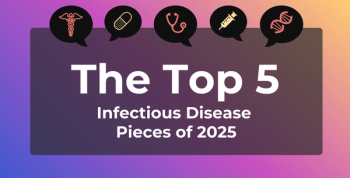
Survivors of Head and Neck Cancers Have an Elevated Risk for Suicide
Over the past several decades, the number of patients who survive head and neck cancer (HNC) has increased; among the more than 15 million cancer survivors in the United States, approximately 430,000 (3%) are survivors of HNC. These survivors may face persistent and late effects of their diagnosis and treatment that increase psychological morbidity, including suicidal ideation.
Over the past several decades, the number of patients who survive head and neck cancer (HNC) has increased; among the more than 15 million cancer survivors in the United States, approximately 430,000 (3%) are survivors of HNC. These survivors may face persistent and late effects of their diagnosis and treatment that increase psychological morbidity, including suicidal ideation.
A study newly
Osazuwa-Peters and colleagues identified 151,167 survivors of HNC, aged 20 years and older, from the National Cancer Institute’s Surveillance, Epidemiology, and End Results (SEER) database. Patients had survived a first primary malignancy of the head or neck, diagnosed between 2000 and 2014, that included squamous cell carcinomas of the oral cavity, pharynx, larynx, nasal cavity, and sinuses (thyroid cancers were excluded, as they are endocrine tumors).
For comparison, data were also gathered on patients who had been diagnosed with cancers of the prostate, breast, lung and bronchus, colon and rectum, urinary bladder, kidney and renal pelvis, corpus and uterus, pancreas, thyroid, stomach, liver and intrahepatic bile duct, brain and other nervous system, testis, ovary, and cervix uteri, as well as melanoma of the skin, non-Hodgkin lymphoma, Hodgkin lymphoma, and leukemia.
The investigators found that there were 4493 cases of suicide among survivors of HNC, for a mortality rate of 23.6 suicides per 100,000 person-years. (The suicide rate for the general US population, by contrast, is 17.4 per 100,000 person-years.) Only survivors of pancreatic cancer had a higher suicide rate, at 86.4 suicides per 100,000 person-years.
In fact, survivors of HNC were twice as likely to die by suicide than survivors of other cancers (adjusted risk ratio [ARR] 1.97; 95% CI, 1.77-2.19). Factors associated with an increased risk included male sex (ARR, 5.63), white race (ARR, 3.28) or “other” race (ARR, 2.17), previously married (ARR, 2.03) or never married (ARR, 1.84), and having regional (ARR, 1.41), distant (ARR, 2.33) or unstaged (ARR, 1.54) disease.
Furthermore, compared with survivors diagnosed between 2000 and 2004, patients who were diagnosed between 2010 and 2014 were at a 27% higher risk of suicide. This finding, write the authors, is consistent with Centers for Disease Control and Prevention data that show a 25% increase in the suicide rate in the general US population since 1999.
In a statement, Osazuwa-Peters called his team’s findings “staggering.” HNC may be the most emotionally traumatic and psychologically distressing of all cancer types, he and his coauthors noted, given the functional and esthetic compromise, pain, swallowing difficulty, ototoxicity, and depression that can arise from these cancers. Furthermore, financial toxicity related to treatment can cause additional stress; approximately half of survivors of HNC become disabled and are unable to return to work after completing treatment, and these patients may be left with medical-related bankruptcy, a factor that can worsen depression and increase suicide risk.
“Now, more than ever before, people are outliving their cancer diagnosis,” Osazuwa-Peters said. “This makes lifelong surveillance critical—being considered a ‘cancer survivor’ does not tell you how well the individual is doing. Some cancer survivors unfortunately decide that is better that they are dead rather than being alive.”
According to Osazuwa-Peters and colleagues, while recent initiatives have focused on survivorship, more work remains in addressing the distress that cancer patients face, including more physician follow-up, screening, and tailored interventions for patients who need them.
Reference
Osazuwa-Peters N, Simpson MC, Zhao L. Suicide risk among cancer survivors: head and neck versus other cancers [published online October 18, 2018]. Cancer. doi.org/10.1002/cncr.31675.
Newsletter
Stay ahead of policy, cost, and value—subscribe to AJMC for expert insights at the intersection of clinical care and health economics.








































